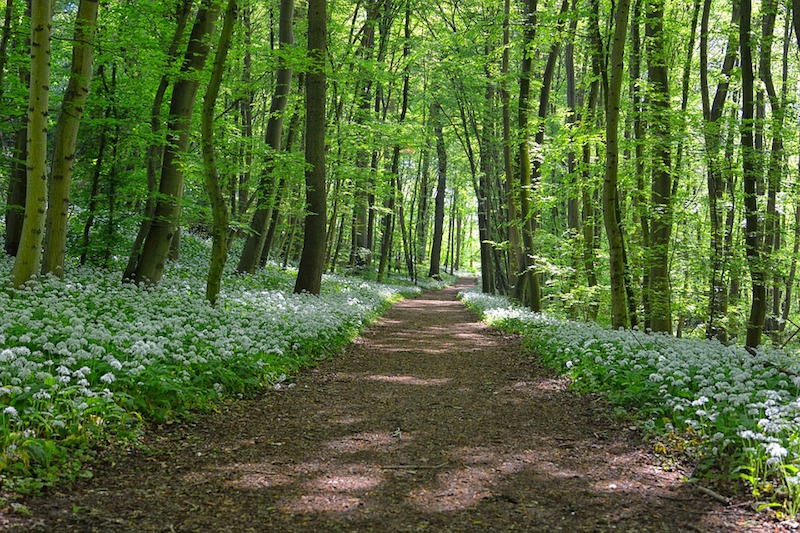Intuition tells us that views of and exposure to the outdoors are good for the human mental state. In recent years, a handful of scientific studies—most notably Heschong Mahone’s daylighting in schools research—has provided AEC teams with important data to back up design decisions around daylighting, views, biophilic design, and a stronger connection with nature.
As a result of these early studies—and our improved understanding of the human mind—building owners and real estate developers have invested considerably to inject nature into their building projects. From hospitals to schools to office buildings, nature has become big business in new construction and renovation work. Landscaped terraces, rooftop gardens, nature meditation rooms, living walls, healing gardens, on-site parks, walking paths, therapy gardens—these are de rigueur in the modern built environment.
But how much “nature” is needed on projects? Is more always better when it comes to these features and spaces? And what types of nature-inspired design elements are most effective? Considering that these components often require special maintenance procedures and staff and ongoing operational investment, it’s important to explore these questions.
New research from King’s College London, published in the peer-review journal BioScience, sheds some light on the subject. It also provides a method by which AEC teams can assess the effectiveness of nature-inspired features.
Using a custom smartphone app, Urban Mind, the research team monitored the momentary mental well-being of 108 city dwellers, who completed 3,013 “ecological momentary assessments” during a one-week period. Each participant was asked to complete seven assessments per day. Questions included: Are you indoors or outdoors? Can you see trees? Can you see the sky? Can you hear birds singing?
Among the findings: There is a “significant” lagging effect of nature on momentary mental well-being. That is, nature has a lasting positive effect on the mind.
How long exactly? It depends. The data shows, for example, that seeing trees and seeing the sky during an assessment had a statistically significant effect on momentary well-being in the next subsequent assessment, which took place an average of two hours and 25 minutes later. For those “feeling in contact with nature,” the positive mental well-being spike lingered as long as four hours and 50 minutes. Same for “hearing birds singing.” The lingering benefit of “seeing or hearing water” was not as statistically significant.
Obviously, more research is needed in this area, but the study’s basic conclusions could help AEC teams make better-informed decisions about nature-inspired design. For instance, can building design features amplify or extend this lagging positive effect? Is a three-acre healing garden overkill when one acre will do? Do we need more birds chirping inside buildings (please, no!)?
Related Stories
| May 18, 2011
Carnegie Hall vaults into the 21st century with a $200 million renovation
Historic Carnegie Hall in New York City is in the midst of a major $200 million renovation that will bring the building up to contemporary standards, increase educational and backstage space, and target LEED Silver.
| May 16, 2011
Seattle unveils program to boost building efficiency
Seattle launched a new program that will help commercial property owners and managers assess and improve building energy efficiency. Under the program, all commercial and multifamily buildings larger than 10,000 sq. ft. will be measured for their energy performance using the EPA’s ENERGY STAR Portfolio Manager.
| May 10, 2011
Are green goals out of reach for federal buildings?
Many federal agencies are struggling to convert their existing buildings to meet green standards, according to the Office of Management and Budget. Of 20 agencies graded by the OMB on their compliance with green mandates, only seven met the 2010 mandate that requires at least 5% of their buildings meet energy-efficient and sustainable standards.
| Apr 14, 2011
U.S. embassies on a mission to green the world's buildings
The U.S. is putting greater emphasis on greening its worldwide portfolio of embassies. The U.S. State Department-affiliated League of Green Embassies already has 70 U.S. embassies undergoing efforts to reduce their environmental impact, and the organization plans to increase that number to more than 100 by the end of the year.
| Feb 7, 2011
GSA Unveils New Sustainable Workplace Design Tool
The U.S. General Services Administration launched its Sustainable Facilities Tool on Monday, Feb. 7. The innovative online tool will make it easier for both government and private-sector property managers and developers to learn about and evaluate strategies to make workplaces more sustainable, helping to build and create jobs in America’s clean energy economy of the future.
| Feb 4, 2011
U.S. Green Building Council applauds President Obama’s Green Building Initiative
The U.S. Green Building Council applauded a key element of President Obama’s plan to “win the future” by making America’s commercial buildings more energy- and resource-efficient over the next decade. The President’s plan, entitled Better Buildings Initiative, catalyzes private-sector investment through a series of incentives to upgrade offices, stores, schools and universities, hospitals and other commercial and municipal buildings.
| Feb 4, 2011
President Obama: 20% improvement in energy efficiency will save $40 billion
President Obama’s Better Buildings Initiative, announced February 3, 2011, aims to achieve a 20% improvement in energy efficiency in commercial buildings by 2020, improvements that will save American businesses $40 billion a year.
| Jan 19, 2011
U.S. Green Building Council Welcomes New Board Directors
The U.S. Green Building Council (USGBC) has announced newly elected officers and new directors to its 2011 Board of Directors, including Elizabeth J. Heider from Skanska; Kirsten Ritchi from Gensler; and Dennis Maloskey, from the Pennsylvania Governor's Green Government Council.











